
















by Janet Spencer
Travel by air is the safest mode of travel. Every billion miles traveled results in 0.07 deaths by air, compared to 7.28 deaths by car crash and 212.57 deaths by motorcycle, which is the most dangerous transportation. The only mode of transportation safer than air travel is elevators and escalators, which carry far more people daily than airplanes. Come along with Tidbits as we take flight!
• At any given moment, there are between 8,000 and 10,000 commercial airplanes in the air worldwide, carrying around 1 million passengers. If you include military and private planes, the number is closer to 15,000 to 20,000 airborne planes carrying about 2 million people.
• A recent study showed that about 87% of Americans have flown at least once.
• People 35 to 44 years old travel the most both domestically and internationally, and men fly slightly more than women.
• The U.S. leads the world in number of passengers carried per year, at about 926.74 million. China comes in second with around 659 million.
• International air traffic fell by 75% during the pandemic years of 2019-2021. Domestic air travel dropped by nearly 50%. (cont)








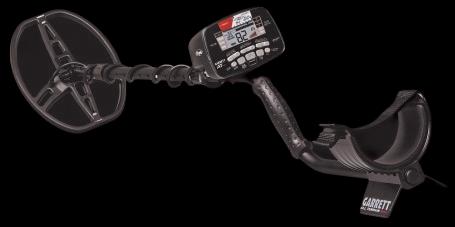
















is Published & Distributed Weekly By: CindAl Publishing Company 812 55th St. Vienna, WV 26105
e-mail: alan@tidbitsmov.com
Advertising: 304.210.3812
We reserve the absolute right to accept, reject, discontinue or refuse any advertisement personal or commercial that we deem may not be conducive for our publication or Tidbits®. The publisher does not assume any responsibility for the claims of its advertisers. Tidbits® is committed to remain a family oriented publication. www.tidbitsmov.com
• Approximately 725,000 aircraft land and take off from Hartsfield-Jackson in Atlanta, Georgia yearly, just under 2,000 per day, more than any other airport.
• O’Hare Airport in Chicago has eight runways, more than any other civilian airport in the world. Hartsfield-Jackson in Atlanta has five, and the Denver Airport has six.
• American Airlines is the largest in the world in terms of number of aircraft (911). Delta is the world’s largest in revenue generated ($50+ billion). United Airlines is the largest in number of destinations served (79 domestic destinations and 111 international destinations in 74 countries).
• Approximately 784,310 people are employed by airlines in the U.S., and about 85% of those jobs are full-time.
• If you include corollary jobs such as working at airports or in a factory building planes, an estimated 10,857,000 people are employed in the aviation industry in the U.S.
• There are over 89,677 flight attendants currently employed in the U.S.
• Florida has more flight attendants than any other state, with about 1,500. That’s followed by California (1,250) and Texas (1,225). The state with the fewest is South Dakota, with 24.
• The average male pilot earns about $98,444 while the average female pilot earns approximately $93,629.
• 78.9% of all flight attendants are women, and 21.1% are men.
• 96.6% of airplane pilots are male. Only 3.4% are female.
• About 74% of flight attendants are over 40. Around 61% of pilots are over 40. Pilots are required to retire at age 67.
• 84.5% of U.S. pilots are Caucasian. (cont)



Find him and enter the weekly contest, please send us a message including your name, Postal mail address the issue number you are referring to and which ad is hosting Tommy for the week! Visit www.tidbitsmov.com or send the answer with the above information to alan@tidbitsmov.com OR you may send us a private message to our Facebook page - Tidbits MOV. PLEASE do not post the answer directly to the page - that ruins the fun for everyone. All winners will be drawn randomly and will be posted weekly. As with all our contests, though you are welcome to play every week, you are only eligible for one winner per household per month.


















• The world’s first regular international airline service was from London to Paris and began in 1919, only 16 years after the Wright brothers’ first flight. The first trip carried one passenger (a reporter) plus a consignment delivery of leather, two grouse, and a few jars of Devonshire cream.
• The supersonic Concorde jets, the fastest commercial planes in the world, flew for only 27 years before being retired in 2003. Only 20 Concordes were manufactured; of those, only 14 flew commercially.
• The record for the greatest number of people suffering from food poisoning on a single flight was set on February 3, 1975. On that flight, 197 out of 344 passengers fell ill, with 144 requiring hospitalization. The outbreak of Staphylococci was traced to a cook at a catering facility who had an infected wound on a finger that was inadequately bandaged. The 220 ham omelets he prepared spent the next 28 hours insufficiently refrigerated.
• Today, airlines have regulations that require the pilot and co-pilot be served different meals while in flight to avoid the possibility of both becoming ill with food poisoning.
• Research by the National Transportation Safety Board in 2020 studied all aviation accidents between 2001 and 2017. It showed that 98.2% of passengers involved survived with minor or no injuries; 0.6% suffered serious injury, and only 1.3% died.
• Between 2015 and 2020, the percentage of commercial flights completed without injuries or fatalities was 99.999%. When you board a plane, you have a 1 in 816,545,929 chance of dying in a plane crash. The National Safety Council estimates the risk of an average American dying in a car accident in their lifetime is about 1 in 93.
• Smoking on airplanes was banned by the FAA in the year 2000. (cont)













• Where is the safest place to sit? A study showed that the middle seats in the back third of the aircraft had a slight advantage, though that’s also where turbulence is worst. It’s also best to sit within five rows of an exit seat.
• Of the top ten safest airlines in the world, only one U.S. airline makes the list: Alaska Airlines ranks #8.
• The safest airline, with an unblemished record since the early 1950s, is Qantas of Australia. Qantas is an acronym for “Queensland and Northern Territory Aerial Services.”
• Every commercial airplane can fly safely with just one engine. A Boeing 747 can glide 17,000 feet, or just over 3 miles (5.2 km) for every 1,000 feet (305 m) of altitude lost.
• All commercial pilots worldwide must speak English and pass a language proficiency test. Likewise, all Air Traffic Controllers must be able to speak English and the local language.
• Air Arabia has the highest rate of cancellations among all airlines, with a startling 91.63%.
• Jin Air of South Korea has the highest percentage of delayed flights at 85.48%. In second place is another South Korean budget airline, Jeju Air, with 64.15% of flights delayed.
• Hawaiian Airlines is the most punctual, with an on-time percentage of 87.40%. Delta Airlines comes in second with 83.56%, followed by Alaska Airlines and Spirit Airlines.
• Only 66 years passed between the first flight at Kitty Hawk in 1903 and the man’s landing on the moon in 1969.
• In 2022 (the last year for which statistics are available), it’s estimated that Americans got on an airplane in the U.S. 747 million times.
• There are 520 FAA control towers in the U.S.

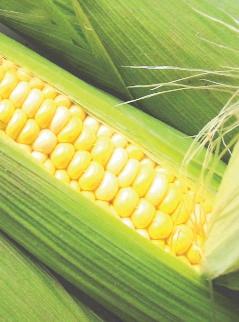






for National Mac and Cheese Day
As a lover of all things comfort food, one of my favorite food holidays is coming up. Next Sunday, July 14 is National Macaroni and Cheese Day. This is not a drill! What better way to celebrate than with a creamy, cheesy bowl of mac and cheese?
Did you know that mac and cheese has a rich history dating back to the 14th century? The earliest known recipe comes from an Italian cookbook called "Liber de Coquina," and it was a dish reserved for the elite. However, it wasn't until President Thomas Jefferson brought the dish to America from France that mac and cheese truly began its rise to comfort food royalty. But what if I told you there's a way to enjoy this classic dish more often and make it a bit healthier? Introducing Cauliflower Mac and Cheese! By swapping half the pasta for cauliflower, you not only reduce the carbs but also boost the nutritional value, making it a win-win.
CAULIFLOWER MAC AND CHEESE
Yield: 4 to 6 main dish servings
Total Time: 35 minutes
16 oz cavatappi pasta or elbow macaroni
1 head cauliflower, cut into small florets
1/3 cup butter
1/3 cup all-purpose flour
1 tablespoon dry ground mustard
1 teaspoon salt
1 teaspoon garlic powder
4 cups milk
4 cups (16 ounces) shredded cheese, I used Colby Jack
Preheat oven to 400 F. Lightly grease a 9by-13-inch pan.
Fill a large saucepan with salted water and bring to a boil. Stir in the macaroni and cauliflower; cook until al dente, about 8 minutes. Drain well and transfer to the prepared pan.
In the same saucepan, melt butter over medium heat. Add flour, ground mustard, salt and garlic powder; stir to combine. Gradually add milk, whisking until smooth and thickened, about 4-5 minutes. Reduce heat to low, add cheese, one handful at a time, and stir until melted and combined Pour the cheese sauce over the macaroni and cauliflower, stirring to combine. Bake, uncovered, until set, about 10 minutes. Let cool and serve. Store any leftovers in the fridge for 3-4 days.
Why Add Cauliflower?
Nutritional Boost: Cauliflower is packed with vitamins C, K and B6, as well as fiber and antioxidants. Including it in your mac and cheese makes the dish more nutrientdense without sacrificing flavor.
Lower Carbs: Reducing the amount of pasta and replacing it with cauliflower lowers the overall carbohydrate content, making it better for those watching their carb intake.
Versatility: Cauliflower takes on the flavors of the dish, blending seamlessly into the creamy cheese sauce. It's a great way to incorporate more vegetables into your family's diet.
Tips for Perfect Cauliflower Mac and Cheese

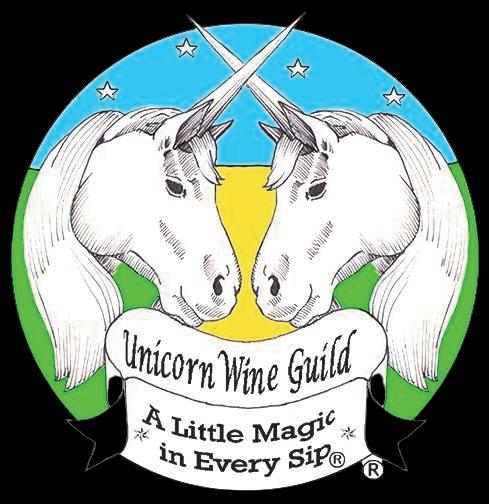


Cook Al Dente: Boil the pasta and cauliflower until just tender. Overcooking can lead to mushy mac and cheese after baking. Cool Before Baking: Let the pasta and cauliflower cool slightly before mixing with the sauce. This prevents the pasta from absorbing too much sauce and getting soggy. Warm Milk for Sauce: Using warm milk helps create a smoother cheese sauce more quickly and prevents lumps.
Freshly Grated Cheese: Grate your own cheese for the best melting results. Preshredded cheese often contains anticaking agents that can affect the texture of your sauce.
Macaroni and cheese is the queen of comfort foods, and with this healthier twist, you can enjoy it more often without the guilt. Celebrate National Macaroni and Cheese Day with this delicious recipe and enjoy the benefits of added cheesy covered veggies in every bite!
***
Lifestyle expert Patti Diamond is the penny-pinching, partyplanning, recipe developer and content creator of the website Divas On A Dime Where Frugal, Meets Fabulous! Visit Patti at www.divasonadime.com and join the conversation on Facebook at DivasOnADimeDotCom. Email Patti at divapatti@divasonadime.com (c) 2024 King Features Synd., Inc.
Deliciously Cheesy with a Healthy Twist: Half pasta, half cauliflower, all comfort!
PHOTO CREDIT: www.JasonCoblentz.com


• As the planet closest to the Sun, Mercury has been the hardest to study. Probes must withstand incredible heat to make the trip. Finally, two spacecraft made the journey, opening up our understanding of this planet.
• The Mariner 10, launched in 1973, swung around Venus before making three fly-by trips around Mercury in 1974. It could only see the side of Mercury lit by the Sun, and mapped about 40% of the planet’s surface.
• In 2004, the space probe Messenger was sent to orbit Mercury, arriving in 2011 after a long look at Earth and Venus. It was intended to orbit Mercury for one year, but lasted four years before crash-landing on the surface.
• The Messenger probe took over 200,000 photos of the planet’s surface, scouted for minerals, measured its core, and investigated its bizarre magnetic field.
• Mercury is 40% the size of Earth. By comparison, our Moon is about 16% the size of Earth. Two moons in the solar system are larger than Mercury, including Jupiter’s Ganymede and Saturn’s Titan.
• The planet’s composition consists of 70% metallic and 30% silicate materials, making it more metallic than rocky. Volatile minerals cover the surface including potassium, magnesium, sulfur, chlorine, calcium, and sodium, far more minerals in denser quantities than other planets or moons.
• Mercury once had active volcanoes, but they are now extinct. It has a molten core like Earth, except Mercury’s molten core equals a whopping one-third of its total mass.
• Earth has the highest density among all the planets, but Mercury is slightly less dense, followed by Venus. Mars is considerably less dense than Earth. However, the gas giants of Jupiter, Saturn, Uranus, and Neptune are not dense at all. Saturn is the least dense planet and it could theoretically float in water. (Continued page #7)










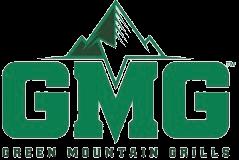











































DEAR PAW'S COR-
NER: My Labrador mix, "Barney," has a gas problem a bad gas problem. I monitor his food intake and have even tried putting him on a special diet food, but he continues to emit noxious odors not just after eating, but throughout the day. Barney is about 9 years old and was adopted from the shelter. Any ideas on how to solve his problem? Thanks.
Jesse B., Independence, Mo.
DEAR JESSE: If you haven't taken Barney to the vet lately, go ahead and do so. As a senior dog, Barney could be developing some problems, including digestive issues, that manifest in a stinky way.
Take note of your dog's overall physical state and any changes in his behavior or daily routine, and report them to the veterinarian. If his coat is rough or oily, if he seems agitated, if he is constantly panting or whining, if he drinks water constantly these can be signs of a problem. Check his stools when he eliminates; loose or runny indicates a problem perhaps minor, perhaps not.
If Barney spends any unsupervised time outside, even just in the backyard, consider whether he has eaten anything he shouldn't. For example, dogs love to root around and roll in smelly carcasses and other animals' droppings, and sometimes eat them (yeah, it's gross, but there it is). He could have picked up a parasite.
Dogs also have a tendency to overeat when given the chance. Secure his dog food well and monitor his eating, just in case. Gorging on dog food or leftovers can cause a life-threatening condition.
Barney may just need a diet that is designed for senior dogs, but let the veterinarian make recommendations based on his diagnosis.
Send your tips, comments or questions to ask@pawscorner.com. (c) 2024 King Features Synd., Inc.









• The magnetic field surrounding Mercury is the smallest and weakest in the solar system, and is only 1% as strong as Earth’s magnetic field.
• The Messenger found a surprising amount of water in the form of ice at the bottom of deep craters shielded by shadow from the Sun.
• A year on Mercury equals 88 Earth days, making it the shortest year of any planet. A “day” on Mercury is equal to 59 Earth days.

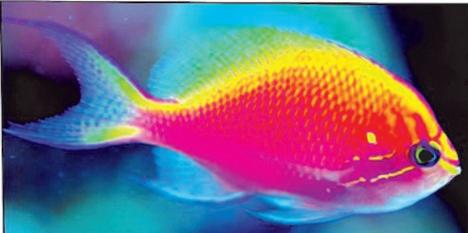

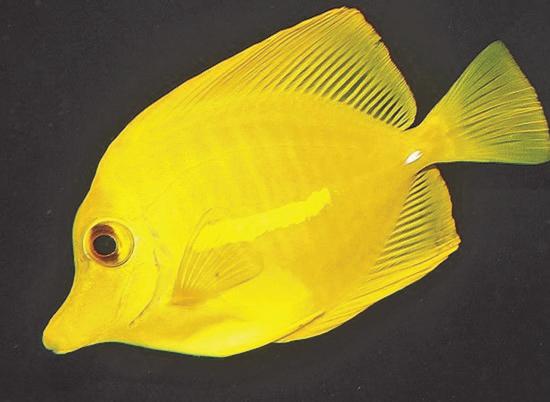






• The planet’s orbit, more eccentric than any other planet, is an elongated oval, meaning it’s sometimes close to the Sun and sometimes far away. This leads to extreme temperatures, ranging from highs of 800°F (430°C) to lows of 290°F (-180°C). Because Mercury’s atmosphere is so thin, it does not hold heat.
• One of the biggest impact craters ever found in our solar system is found on Mercury’s surface. Called the Caloris Basin, the crater stretches nearly a thousand miles (1,550 km). This is about the same distance from Seattle to Los Angeles. The name comes from “calor,” the Latin word meaning heat, because the Sun is directly overhead on a regular basis. The rock that caused this crater would have been around 60 miles (100 km) wide, and likely landed around the same time that most of the major craters in Earth’s Moon were formed.
• A probe called the BepiColombo, launched by the European Space Agency in 2018, will arrive at Mercury in 2025. This probe was named for Italian scientist Giuseppe “Bepi” Colombo, who was the first to propose using the “gravity assist” maneuver as a slingshot to gather speed and conserve energy by doing a boomerang maneuver around one planet on the way to another planet. The Mariner 10 probe was the first interplanetary spacecraft to use this principle as it ricocheted around Venus on its way to Mercury in 1974. Since then, nearly all space probes have used the principle.













